Input interpretation

ammonia
Chemical names and formulas
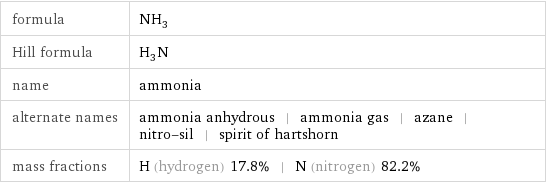
formula | NH_3 Hill formula | H_3N name | ammonia alternate names | ammonia anhydrous | ammonia gas | azane | nitro-sil | spirit of hartshorn mass fractions | H (hydrogen) 17.8% | N (nitrogen) 82.2%
Lewis structure
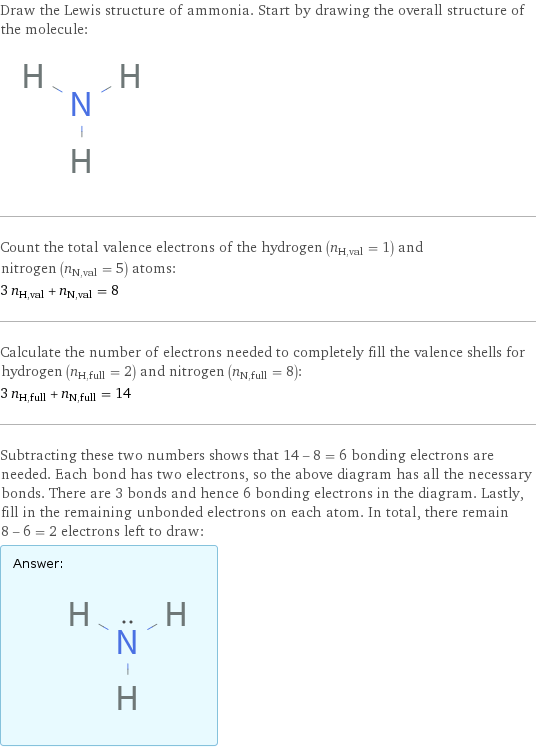
Draw the Lewis structure of ammonia. Start by drawing the overall structure of the molecule: Count the total valence electrons of the hydrogen (n_H, val = 1) and nitrogen (n_N, val = 5) atoms: 3 n_H, val + n_N, val = 8 Calculate the number of electrons needed to completely fill the valence shells for hydrogen (n_H, full = 2) and nitrogen (n_N, full = 8): 3 n_H, full + n_N, full = 14 Subtracting these two numbers shows that 14 - 8 = 6 bonding electrons are needed. Each bond has two electrons, so the above diagram has all the necessary bonds. There are 3 bonds and hence 6 bonding electrons in the diagram. Lastly, fill in the remaining unbonded electrons on each atom. In total, there remain 8 - 6 = 2 electrons left to draw: Answer: | |
3D structure
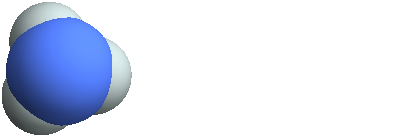
3D structure
Basic properties
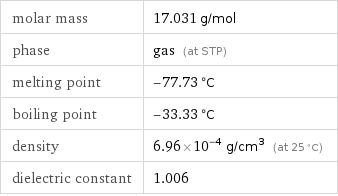
molar mass | 17.031 g/mol phase | gas (at STP) melting point | -77.73 °C boiling point | -33.33 °C density | 6.96×10^-4 g/cm^3 (at 25 °C) dielectric constant | 1.006
Gas properties (at STP)

density | 6.96×10^-4 g/cm^3 (at 25 °C) vapor density | 0.6 (relative to air) molar volume | 24500 cm^3/mol surface tension | 0.0234 N/m refractive index | 1.355 dynamic viscosity | 1.009×10^-5 Pa s (at 25 °C)
Units

Thermodynamic properties

specific heat capacity c_p | gas | 2.061 J/(g K) molar heat capacity c_p | gas | 35.1 J/(mol K) specific free energy of formation Δ_fG° | gas | -0.9629 kJ/g | gas | 26.75 kJ/g molar free energy of formation Δ_fG° | gas | -16.4 kJ/mol | gas | 455.5 kJ/mol specific heat of formation Δ_fH° | gas | -2.695 kJ/g molar heat of formation Δ_fH° | gas | -45.9 kJ/mol specific entropy S° | aqueous | 6.518 J/(g K) | gas | 11.33 J/(g K) molar entropy S° | aqueous | 111 J/(mol K) | gas | 193 J/(mol K) molar heat of vaporization | 23.3 kJ/mol | specific heat of vaporization | 1.37 kJ/g | molar heat of combustion | 316 kJ/mol | specific heat of combustion | 18.6 kJ/g | molar heat of fusion | 5.66 kJ/mol | specific heat of fusion | 0.332 kJ/g | thermal conductivity | 0.02449 W/(m K) | critical temperature | 405.5 K | critical pressure | 11.3 MPa | (at STP)
Phase diagram
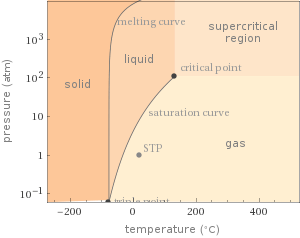
Phase diagram
Units

Chemical identifiers
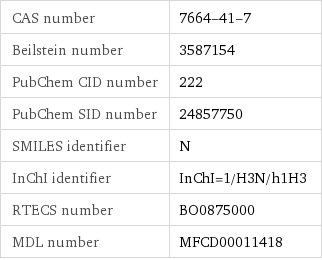
CAS number | 7664-41-7 Beilstein number | 3587154 PubChem CID number | 222 PubChem SID number | 24857750 SMILES identifier | N InChI identifier | InChI=1/H3N/h1H3 RTECS number | BO0875000 MDL number | MFCD00011418
NFPA label

NFPA label
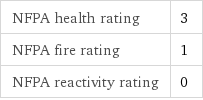
NFPA health rating | 3 NFPA fire rating | 1 NFPA reactivity rating | 0
Safety properties
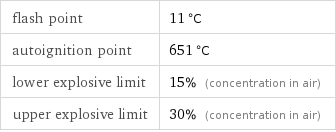
flash point | 11 °C autoignition point | 651 °C lower explosive limit | 15% (concentration in air) upper explosive limit | 30% (concentration in air)

DOT hazard class | 2.3 DOT numbers | 1005
Toxicity properties

short-term exposure limit | 27 mg/m^3

long-term exposure limit | 18 mg/m^3 (over 8 hours) RTECS classes | agricultural chemical and pesticide | tumorigen | mutagen | human data